mobile View, to the German Version tap the flag


- also: Estremadura
- former part of Castile/New Castile and Provinces of Spain
- today Autonomous Region of Spain
• Flag
• Historical and other Flags
• Meaning/Origin of the Flag
• Coat of Arms
• Meaning/Origin of the Coat of Arms
• Map of the autonomous regions of Spain
• Numbers and Facts
• History
• Origin of the Country's Name
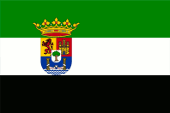
Flag of Extremadura,
ratio = 2:3,
Source, by: Flags of the World






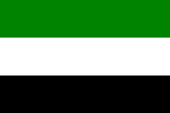
1977–1985,
Flag of Extremadura,
ratio = 2:3,
Source, by: World Statesmen



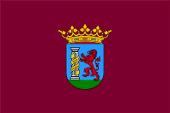
Flag of Badajoz Town,
ratio = 2:3,
Source, by: Flags of the World



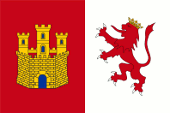
Flag of Cáceres Town,
ratio = 2:3,
Source, by: Wikipedia (ES)




The flag of Extremadura was officially introduced on 27th of February in 1985. It shows three horizontal stripes in green, white and black and the coat of arms of the country in the middle of the white stripe, moved in direction of the pole. The flag combines ostensibly the colours of the towns of Cáceres (green-white) and Badajoz (white-black), but its flags show other colours. Under the government of General Franco (1936–1975) all regional flags were forbidden. After the death of Franco (1975) the regional flags became re-introduced, respectively there were created new. Extremadura had in the times before none own flag, and they introduced the new flag in 1977, but it was unofficial, because Extremadura had none status of autonomy until 1982. That first flag showed like the today's flag three horizontal stripes in green, white and black, but still none coat of arms. In most autonomous regions of Spain, the more recent flag history already began in the years before the granting of the Statute of Autonomy with a flag without arms, because the arms had often not even been decided yet. After all, it has mostly become accepted that the flag with the coat of arms is used by the regional authorities or on official occasions and the flag without the coat of arms is to be used quasi for private, decorative purposes.
Source: Wikipedia (ES),
Flags of the World,
Volker Preuß

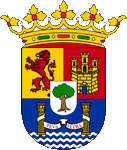
since 1985,
Coat of arms of Extremadura,
Source, by: Wikipedia (ES)
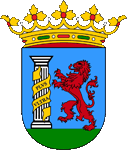
Coat of arms of Badajoz Town,
Source, by: Wikipedia (ES)

Coat of arms of Cáceres Town,
Source, by: Wikipedia (ES)

The coat of arms of the Communidad Extremadura was officially introduced on 3rd of June in 1985. It shows a parted per fess and above in party per pale divided shield. In the first field a red lion on gold, in the second field a golden castle on red and in the lower third field in front of a blue background, below white wave lines, above that two golden columns and a silvery banner with the inscription "Plus Ultra". In the middle of the shield a small silvery heart shield with a tree in natural colours. Above the shield the crown of Castile. The coat of arms combines components of the heraldry of the cities of Badajoz and Cáceres as well as of Spain and the Extremadura itself. The red lion is taken from the coat of arms of Badajoz and remembers only a little bit the lion of Leon. The castle is taken from the coat of arms of Cáceres and remembers Castile, to which Extremadura officially belonged until 1833. The lower third field shows elements of the heraldry of Spain, namely the "Columns of Hercules" (actually the both rocks on both sides of the Strait of Gibraltar) as symbol for the transoceanic influence of Spain, which has its roots especially in the fact that very many of the seafarers and conquerors come from the Extremadura, for instance Hernán Cortés, Francisco Pizarro or Hernando de Soto. Because of that the Extremadura is called also "Tierra de Conquistadores y Lusitanos". On the banner between the columns the motto of the Spanish state: "Plus ultra" → "always further". It remembers the great nautical and colonial history of Spain but of Extremadura too. The small silvery heart shield with the balsa oak tree represents obviously Extremadura itself. It should represent one of the famous oak trees, which have been so important for the country and are important until nowadays, as symbol of live, construction material and purveyor of fodder for the economical important stock-farming.
Source: Wikipedia (EN),
Volker Preuß

The autonomous Regions of Spain:
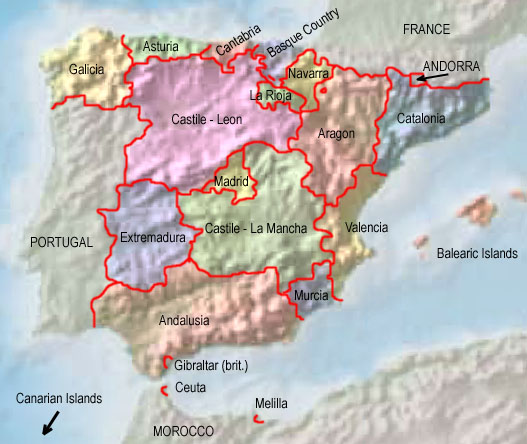
Source: Freeware, University of Texas Libraries, modyfied by: Volker Preuß

Area: 16.075 square miles
Inhabitants: 1.054.776 (2022), mostly New Castilians
Density of Population: 66 inh./sq.mi.
Capital: Mérida, 59.324 inh. (2022)
official Language: Spanish (Castilian)
Currency: Spanish (Euro) currency
Time Zone: GMT + 1 h
Source: Wikipedia (EN)

early age · settlement of Iberians
ca. 600 B.C. · immigration of Celts, mix with the Iberians, evolution of the Celtiberians
218–201 B.C. · Second Punic War, the Roman Empire acquires the possessions of Carthago in Iberia, subjugation of whole Iberia until the year 19 B.C., Roman settlement, romanization, the today’s Extremadura comes to the Roman province of Lusitania
ca. 25 B.C. · the Romans establish the Cities of Augusta Emerita (nowadays Mérida) and Pax Augustas (nowadays Badajoz), Augusta Emerita (Mérida) keeps until the invasion of the Arabs one of the most important towns on the whole Iberian Peninsula
ca. 400 A.D. · Great Transmigration (Migration Period), immigration of Alans, teutonic Suebs, Vandals and Western Goth, the today’s Extremadura becomes a part of the Empire of the Western Goth
711–714 · annihilation of the Empire of the Western Goth by from northern Africa coming Arabs, the Western Goth retreat to Asturia and Cantabria, the south of the today's Extremadura becomes occupied by the Arabs, establishment of the Arabian Emirate of Cordoba, arabization, islamization, the City of Pax Augustas becomes renamed in "Baled Aix"
929 · the Emirate of Cordoba becomes transformed ot the Arabian Califate of Cordoba under the dynasty of the Omajjads
1010 · overthrow of the Omajjads dynasty, to 1040 disintegrates the empire in some arabian kingdoms (Malaga, Algeciras, Granada, Cordoba, Toldeo, Valencia, Zaragoza, Denia, Murcia and Badajoz)
1220–1250 · troops from Castile and Leon liberate Extremadura from the Arabs, the country becomes subordinated under the Crown of Castile
1229 · Badajoz Town becomes liberated from the Arabs by Alfons IX. of Leon and his troops
1348 · the pestilence depopulates Extremadura nearly complete, the country desolates
15th–16th century · in context with a economical recovery however become the once mighty oak woods deforest for ship construction, the originally very fruitful landscape desiccates and became a steppe, big parts of the population emigrate to America in the 16th century
1833 · the until that point in time in Spain existing partial kingdoms and regions become divided in provinces, Castile too, in this way also Extremadura was divided in two provinces: Badajoz and Cáceres
16th of August in 1982 · Extremadura gets the statute of autonomy within Spain (by summary of the provinces of Badajoz and Cáceres), establishment of the "Autonomous Community of Extremadura"
Source: Wikipedia (EN),
World Statesmen,
Volker Preuß

The name "Extremadura" is to translate with "the most hard". It is a hint to the waether extremes in that region. Extremadura is also called "Tierra de Conquistadores y Lusitanos", because very many of the seafarers and conquerors in the Spanish history come from Extremadura, for instance Hernán Cortés, Francisco Pizarro or Hernando de Soto. The Lusitans are one with the Celts mixed people related to the Celtiberians in the area of Extremadura and the today's Portugal. In the times of the Roman Empire they lived in the province of Lusitania.
Source: Handbuch der geographischen Namen, Volker Preuß


![]()

















